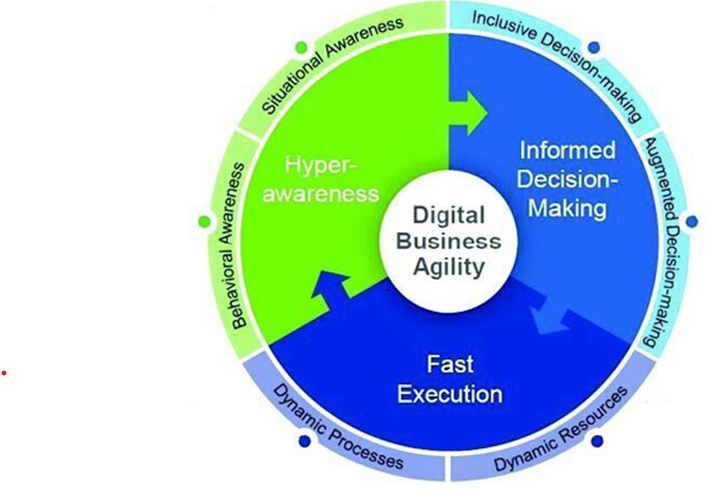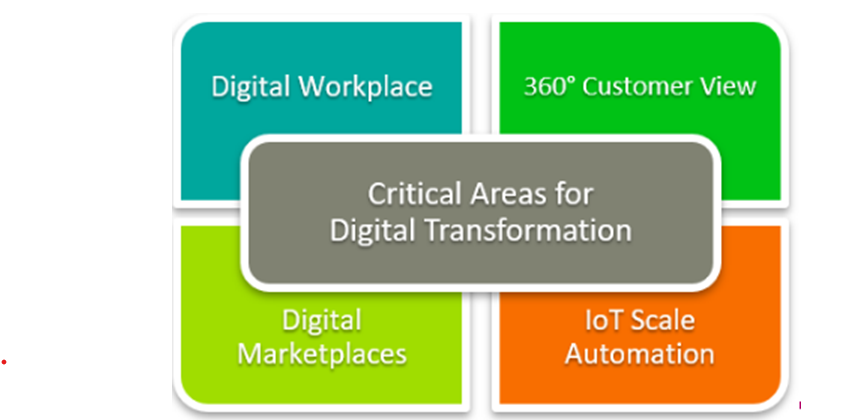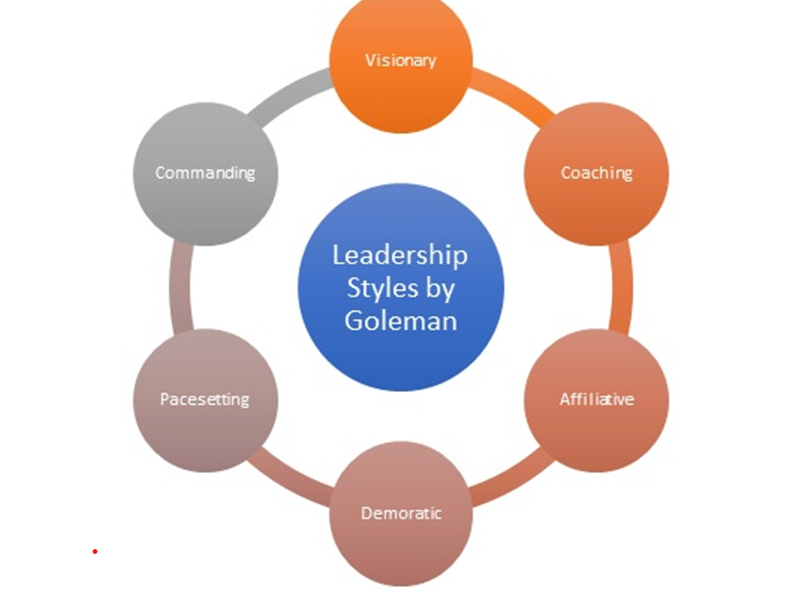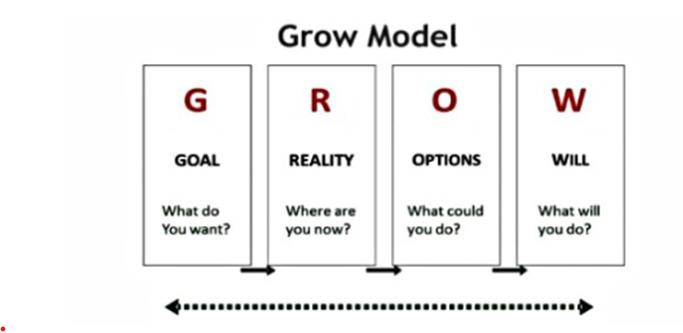MSc Management Leading through Digital Disruption Assignment Sample
Introduction
Digital disruption is the change process of an organisational environment in all the aspects related to business process to work culture which is achieved through the digital capabilities through the emerging technological artefacts helping in gaining competitive advantage.
The rapid change in the market along with the effects of the Covid-19 outbreak has forced the industries across different sectors to incorporate the emerging digital technology for making the process of market operation with agile support to the consumer through employees and technology.
In this report, the details of digital disruption for ASDA will be briefly elaborated on for advancing through the technological emergence to gain market agility.
Task 1: The case for change
Background
ASDA is a leading supermarket retail organisation based in the United Kingdom (UK) which was established in the year of 1949 and has been doing business successfully through the years.
ASDA revenue has crossed the mark of $26 billion in the year 2021 through serving the global consumer with an employee strength of 1,45,000 (Asda, 2022).http://MSc Management Leading through Digital Disruption Assignment Sample ASDA is a supermarket chain which is involved in a wide range of products in business as grocery, clothing, processed food items, tyre, insurance and financial services.
Critical explanation of digital transformation in the company
The Covid-19 outbreak has changed the business engagement in the industries which has witnessed the growth of the e-commerce market with the changing role of retail stores with changing consumer preferences through strict lockdown measurement (Refer to appendix 1).
The organization is looking forward to a digital platform to understand and engage with the changed customer behaviour and perception. However, the survival of the fashion retail industry was critical through the beginning years of the Covid-19 outbreak and retail industries are accelerating the digital transformation stages for better market engagement (McTiernan, 2021).http://MSc Management Leading through Digital Disruption Assignment Sample
Analysing the objectives of digital transformation
The adaptation of digital transformation is helpful for seamless integration of business models to efficiently support the market operation through the business method and utilization of the supply chain with simulating the innovation for effective use.
Online order processing, digital payment and home delivery through the single digital platform also essentially help the business process of ASDA through integration for generating better cash flow with sense-making.
Task 2: ASDA digital technologies and initiatives to gain Digital Business Agility
There are three things that a company requires to implement agility which are hyper-awareness, fast execution and informed decision, companies require these abilities to respond effectively and fast to emerging threats.
The business digital agility model is required by a company to seize new opportunities in the industry for reaching the level of success in the market (Setiawan, 2018). http://MSc Management Leading through Digital Disruption Assignment Sample

Figure 1: Business Agility Model
(Source: Setiawan, 2018)
The company uses the capabilities to understand situations in a discrete sense which forms a complex and interaction the foundation for the whole enterprise.
The business Agility Model may be critical for the survival of an organisation in turbulent situations by identifying the rapid shifts in competitive landscapes, technologies and consumer preferences.
Hyperawareness
ASDA has been going through digital transformation, and for that, ASDA has been thinking of using multiple workday solutions which may include Workday Human Capital Management (HCM).
The company may also include Workday compensations, Workday Learning, Workday benefits and Workday recruiting that may help the company to gain a unified view of the workforce in the organization (Refer to Appendix-2).
The company also moves in the direction of digital transformation to deliver and engage the employee experiences that may help the organization to keep pace with the emerging talents and the talent needs in the organization. ASDA has partnered up with Workday solutions to meet the consumer demands and that may bring business agility while providing tools and insights that may be required by the company for a better plan for the future.
One initiative that may be adopted by ASDA in carrying forward with the digital transformation along with Workday Solutions is to enhance consumer satisfaction through employee management with the help of digital technology such as Machine learning.
ASDA may use Machine learning at a scale that may provide the organization with demand projection which includes calculated business risks for understanding consumer behaviour and demand drivers for the organization (MAGLI and BECKER, 2020). http://MSc Management Leading through Digital Disruption Assignment Sample
The hyperawareness component according to the Business Agility Model in ASDA may help the company to increase the visibility and workforce management capabilities with retail technology providers to gain world-class capabilities.
The Machine Learning technologies may be used by the organization to optimize the business strategies which also may contribute to the reduction of excess stocks and also avoidance of waste materials.
Make informed decisions
The informed decision that may be taken by ASDA is that the company may reimagine the business and process to drive better results as a form of moving towards digital transformation.
ASDA with the help of innovative solutions and services may connect with shoppers, products and employees via actionable data transformation to enhance the shopper experience. Moreover, ASDA may gain centralized visibility to the loss prevention management which may be allotted with the implementation of superior asset protection and includes operational efficiency throughout the organization.
ASDA may include the initiative in the creation of smart buildings that may help control the building operations that may improve cost savings and the organizational performance which may benefit in increasing visibility over maintaining sustainability (Gielens et al., 2021). http://MSc Management Leading through Digital Disruption Assignment Sample
ASDA may implement Internet of Things (IoT) technologies for the creation of smarter retail stores used to connect in-store systems such as security and fire alarms in the stores in the UK.
The implementation of the IoT technologies in the initiatives of making smarter retail stores of ASDA may provide a competitive advantage and enable the company to grow market share in the industry.
Moreover, with the help of IoT technologies, ASDA may be useful in asset management and also the delivery of values to the consumers by maintaining a technologically advantageous position in the market.
ASDA may be able to use the access of real-time data to monitor the building maintenance and performance issues and resolve the issues to maintain the consumer image in the industry (Beckers et al., 2022). http://MSc Management Leading through Digital Disruption Assignment Sample
ASDA may be able to detect the issues in the stores regarding the breakdown of machinery that causes loss in sales, spoiled products and also consumer frustration with daily monitoring.
Execute fast
ASDA may enhance the omnichannel capabilities in the management of the overhaul, which may provide management solutions to enhance the consumer’s experience and end-to-end implementation of the supply chain management of the company.
ASDA may implement the microservices with the goals of faster order processing, connection with the entire supply chain and real-time inventory to enhance the consumer’s experience while shopping. The digital transformation may be achieved by the company if the initiative is focused on bringing the drive value throughout the supply chain system of the company (Agrawal et al., 2019).http://MSc Management Leading through Digital Disruption Assignment Sample
Artificial intelligence may be used in the distribution centres of the company that may enhance the company’s capabilities in meeting the demand for parcel collection and returns services.
The change in the consumer behaviour and also the increase in the online purchase of products in the company, the utilization of the AI technologies in the SCM may provide sufficient growth through the provision of reliability and lessens the chances of error.
The use of Robotics and AI logistics solutions in ASDA may turn out to be fruitful in material handling integrated within the business that may prove to be an innovative solution to material handling.
Additionally, the use of AI technologies in supply chain management may be useful in increasing the reliability, flexibility and efficient monitoring of the warehouses for the execution of the process in a rapid manner (Wang et al., 2022).http://MSc Management Leading through Digital Disruption Assignment Sample
The use of AI technologies may help ASDA to improve the accuracy and also the efficiency to make the smoother running of the employees in the warehouses of the Supply chains. The organizational mindfulness is done with the implementation of the AI technologies to move towards digital transformation by bringing market agility to the business (Li et al., 2021).http://MSc Management Leading through Digital Disruption Assignment Sample
Task 3: Creation of Digital Ready Culture
Putting customers first
Customers are the backbone of the organization that helped in making the organization superior in the market operation with loyalty and brand confidence towards ASDA.
The 360-degree customer view needs to be incorporated for the business advantage. Digital sensing through behavioural targeting will be helpful to gain a deep insight of customer perspectives through which marketing managers may approach the customer for a better business enhancement by offering the consumers’ aspect of price, quality and variety of products on online e-commerce platforms.
Artificial Intelligence (AI) blended with the human touch will help to improve the satisfaction level of both the customer and the agent (Purcărea, 2018).http://MSc Management Leading through Digital Disruption Assignment Sample
Creating a collaborative culture
The organizational culture is a significant aspect of the digital transformation in the retail sector where employee adaptation and reflections are helpful for better customer engagement and support through a single digital platform.
It may be stated that the work design characteristics for employees in ASDA such as motivation, interdependence, workplace collaboration, and recognition are mediating the work outcome through changes in behavioural, attitudinal, well-being and role perception (Meske and Junglas, 2021). http://MSc Management Leading through Digital Disruption Assignment Sample
The organizational information regarding the digital transformation along with employee elicitation helps in digital workplace transformation (Refer to Appendix 3).
Instilling a culture of innovation
Organizational support and leadership contribution with monitoring performance and giving essential feedback along with the autonomy in the work activity fosters the innovative work culture in ASDA.
The resilience in the food supply chain will be improved through the incorporation of technology where perishable products are prone to be damaged and reflect the loss in business.
The scope of tracking and sharing information helps decrease the loss in the supply chain and support the consumer with quality products (Kazancoglu, 2020). http://MSc Management Leading through Digital Disruption Assignment Sample The digital marketplace helps the business process with the organizational culture to accommodate the business integration through coordination of different stakeholders and support the market operation.

Figure 2: Areas of digital transformation in the digital-ready culture of ASDA
(Source: Ferreira et al., 2020)
Becoming a digital-champion
The retail organizations are looking for more elaborated market representation with multi-sided marketplaces bringing together the online and offline marketplace for better hopping experiences for the consumer (Ferreira et al., 2020). http://MSc Management Leading through Digital Disruption Assignment Sample
Moreover, digital disruption is dramatically changing the competitive marketing landscape through the implementation of different technologies to automate the business process for better customer engagement and high market return. The use of Internet of Things (IoT) devices, Robotic Process Automation (RPA) big data, and machine learning will help the ASDA’s market operation be more moth and customer friendly.
Task 4: Steer collaboration
Evaluating the roles and responsibilities of CCO with real case samples
Chief Collaboration Officer (CCO) is responsible for building and managing multidisciplinary teams and processes encompassing the internal and external team and business process to initiate and influence the business agility through digital disruption. In the ASDA organization, CCO will accommodate the consumer order processing, back-end services, suppliers and logistics department to cope with the consumer request for on-time delivery.
The scientific software team is leveraged through the data-driven approach which will prompt the robust design of the digital platform for better team collaboration (Yamamoto and Haruta, 2019).
Critically evaluate the role of the CCO on increasing collaboration among departments in the company
The CCO will have to be a strong communicator, with cultural and emotional intelligence to acknowledge the perspective of different teams in the ASDA business process. CCO will communicate with different teams for better business correspondence to gain the business objectives through the navigation of teamwork on the single digital platform.
Apart from that, the CCO of ASDA needs to be extremely responsible for minimizing the barriers of cross-team interoperability and effectively ensuring incentive collaboration, cross-department and team communication for better business agility with data-driven decision making.
Task 5: Selection of leaders
Selection of appropriate leadership styles to support digital transformation by using Goleman’s leadership styles
Goleman’s leadership styles, include six types of leadership styles namely, Coaching, Visionary, Affiliative, Democratic, Pacesetting, and Commanding styles, among these styles Visionary leadership style is appropriate in bringing digital transformation to the company.
According to Goleman’s leadership style the Visionary leadership style, the role of the leadership style is ever-changing and in addition to that, the visionary leaders bring digital savvy to the business strategies to move forward toward digital transformation.
The transformation process utilized by the visionary leadership style is to reevaluate the core operations and enter the value proposition to succeed in the digital economy. The digital economy of the company is brought through digital transformation by the visionary leadership style with the digitalization of the process and practices within the business field (Klein, 2020).

Figure 3: Goleman’s leadership model
(Source: Klein, 2020)
The leader of the organization taking a visionary leadership style is able to implement digital programs and initiatives in the development of the internal talents for the betterment of the organization.
Moreover, the visionary leadership style may be able to empower, enable, motivate and lead the employees towards the attainment of common organizational goals and vision and foster better leaders for the future.
Develop leadership style through Grow model
This visionary leadership style may be utilized in ASDA in the development of the company by running the organization through a passionate, knowledge-based, strong-willed mindset to achieve long-term organizational goals.
Moreover, the visionary leadership style may be analyzed through the Grow Model, in which the goal set by the visionary leader is clear, and the leadership in the company may help in the alignment of the employee’s goals with the organizational goals.
Additionally, the Visionary leadership may help to understand the employees and the staff about the reality of the position of the organization that may help in developing motivation for the development of the company in reaching success (Ubaidillah et al., 2019). http://MSc Management Leading through Digital Disruption Assignment Sample

Figure 4: Grow Model
(Source: Ubaidillah et al., 2019)
The visionary leader may utilize the options in the Grow Model to utilize for digital transformation with the utilization of modern technologies such as AI, Machine learning in bringing the company ASDA towards business agility in the market.
The visionary leader focuses on the long-term goals of the company, so the visionary leader may be able to utilize various business strategies and motivate the employees to bring digital transformation to ASDA.
Conclusion
In this report, it may be concluded that ASDA may be able to gain digital transformation with the help of the business agility model discussed along with that, the Digital ready culture is created by putting the consumers first.
The digital-ready culture may be implemented in ASDA with the help of areas in digital transformations such as 360-degree customer view, digital workplace, digital marketplaces and IoT Scale automation within the organization.
Goleman’s leadership style and the Grow model are used in this report to identify the visionary leadership style which is found to be fit for ASDA.
References
Agrawal, P., Narain, R. and Ullah, I., 2019. Analysis of barriers in implementation of digital transformation of supply chain using interpretive structural modelling approach. Journal of Modelling in Management.
Asda, 2022. [online] Available at: <https://corporate.asda.com/our-story/our-history> [Accessed 14 June 2022].
Beckers, J., Birkin, M., Clarke, G., Hood, N., Newing, A. and Urquhart, R., 2022. Incorporating E‐commerce into Retail Location Models. Geographical Analysis, 54(2), pp.274-293.
Ferreira, M.J., Moreira, F., Pereira, C.S. and Durão, N., 2020, April. The digital transformation at organizations–the case of retail sector. In World Conference on Information Systems and Technologies (pp. 560-567). Springer, Cham.
Gielens, K., Ma, Y., Namin, A., Sethuraman, R., Smith, R.J., Bachtel, R.C. and Jervis, S., 2021. The future of private labels: towards a smart private label strategy. Journal of Retailing, 97(1), pp.99-115.
Kazancoglu, Y., Sezer, M.D., Ozbiltekin-Pala, M., Lafçı, Ç. and Sarma, P.R.S., 2021. Evaluating resilience in food supply chains during COVID-19. International Journal of Logistics Research and Applications, pp.1-17.
Klein, M., 2020. Leadership characteristics in the era of digital transformation.
Li, H., Wu, Y., Cao, D. and Wang, Y., 2021. Organizational mindfulness towards digital transformation as a prerequisite of information processing capability to achieve market agility. Journal of Business Research, 122, pp.700-712.
MAGLI, E. and BECKER, T., 2020. A Machine Learning Approach in Pendant Drop Tensiometry Using Image Moments.
McTiernan, N., 2021. COVID-19 and the dynamics of digital transformation: Reshaping the fashion industry (Doctoral dissertation, Dublin Business School).
Meske, C. and Junglas, I., 2021. Investigating the elicitation of employees’ support towards digital workplace transformation. Behaviour & Information Technology, 40(11), pp.1120-1136.
Purcărea, T., 2018. Developing marketing capabilities by mapping customer journey and employer journey, considering the blurring of boundaries between marketing, technology and management. Holistic Marketing Management Journal, 8(1), pp.22-44.
Setiawan, B., 2018. A Critical Review of the Business Agility Literature in the Advancement of Information and Communication Technology.
Ubaidillah, M., Christiana, R. and Sahrandi, A., 2019. the Visionary Leadership Strategy in Advancing Educational Institutions. Erudio Journal of Educational Innovation, 6(2), pp.206-215.
Wang, X., Kumar, V., Kumari, A. and Kuzmin, E., 2022. Impact of Digital Technology on Supply Chain Efficiency in Manufacturing Industry. In Digital Transformation in Industry (pp. 347-371). Springer, Cham.
Yamamoto, Y. and Haruta, J., 2019. Translation and cross-cultural adaptation of the Japanese version of the Assessment of Interprofessional Team Collaboration Scale-II (J-AITCS-II). MedEdPublish, 8(195), p.195.


